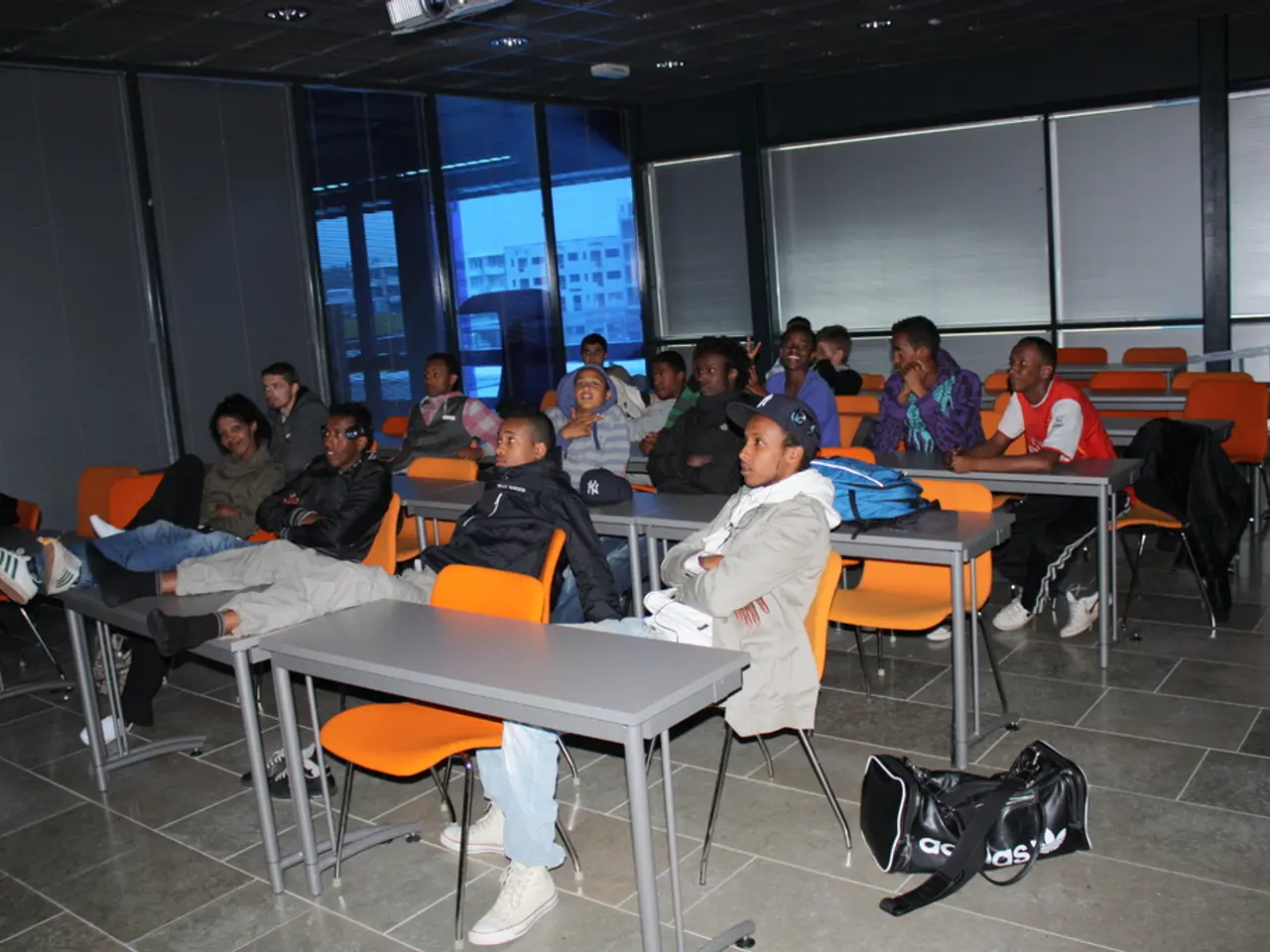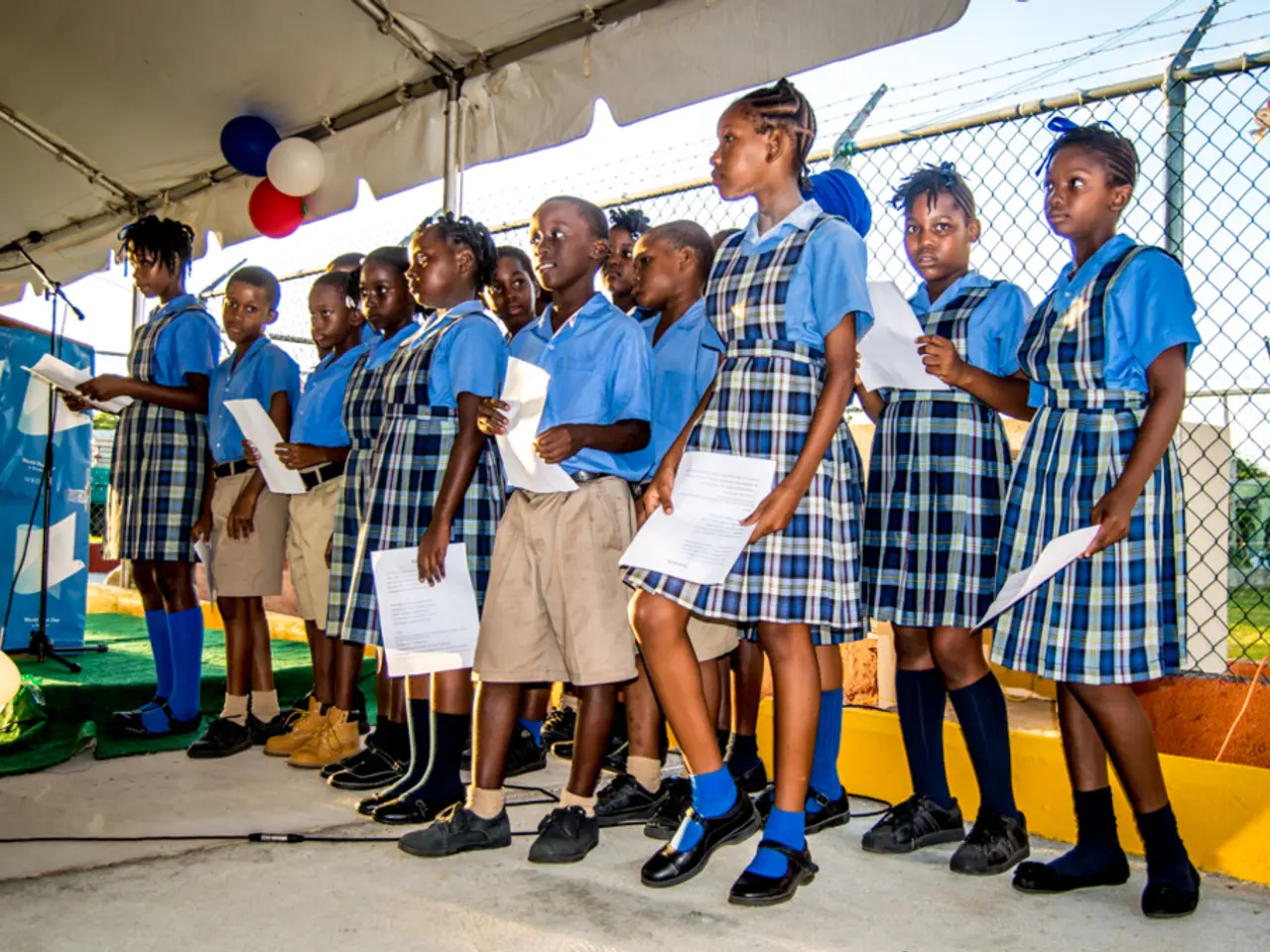Hot schools constructed for intense heat without the need for air conditioning
In a bid to combat global warming and create comfortable learning environments for children in hot climates, architects are pioneering sustainable school designs that emphasize passive cooling techniques and the use of local materials such as clay.
Francis Kere, a prize-winning architect, is among those at the forefront of this movement. His Gando Primary School in Burkina Faso, for instance, was built to provide a comfortable learning environment despite high temperatures. Kere's studio also receives many inquiries about building with clay and passive cooling.
One such architect is German Anna Heringer, known for building schools with mud, a low-tech material with high-tech performance. The Rajkumari Ratnavati Girls School in northwest India's Thar desert, designed by New York architect Diana Kellogg, is another example of this approach. The school is designed to withstand high temperatures and promote social change, running off solar power, harvesting rainwater, and featuring a design that allows for natural ventilation and cooling effects.
The use of clay in these designs is particularly advantageous. Unlike concrete and glass that retain heat and increase cooling demand, clay naturally regulates temperature by absorbing heat during the day and releasing it at night. Simple techniques can also prevent erosion, and the natural crystallisation process strengthens the walls over time, making them durable and sustainable.
Key passive cooling strategies include maximizing cross-ventilation through openings at both ends of classrooms, shading facades with overhanging roofs, and designing buildings inspired by natural ventilation systems like termite mounds that draw in cool air and expel hot air. Building orientation to optimize airflow and solar shading is also crucial, as research shows rotating classrooms away from direct sun exposure reduces cooling load and thermal discomfort. External insulation and shading extensions are important to minimize heat gain as well.
These approaches reduce reliance on mechanical cooling, lower energy consumption, and create healthier learning environments for children in hot climates. They are increasingly important given the negative impact of heat on learning performance and the broader challenges of climate change adaptation in education infrastructure.
Paris aims to convert all asphalted schoolyards to green oases by 2050, and Britain is future-proofing new school buildings for a 4°C temperature rise, recognizing the need to adapt to climate change. The World Bank warns that climate change is threatening educational attainment, making these sustainable designs all the more crucial.
Playgrounds are essential for children's development, and many cities are trying to make them greener. Ideally, classrooms should be no hotter than 26°C. With these considerations in mind, architects like Heringer argue that sustainable architecture means working with local materials. The shift in interest towards building with clay and passive cooling is evident, and these designs are set to play a significant role in shaping the future of education infrastructure in hot climates.
[1] Kellett, A. (2018). Building with clay: A low-tech material with high-tech performance. The Conversation. [2] Kellett, A. (2019). The future of school design: Sustainable solutions for hot climates. Architecture Today. [3] Kellett, A. (2020). Passive cooling strategies for sustainable school design. Journal of Sustainable Architecture.
- Water security, a crucial aspect of sustainability, is ensured in these sustainable school designs through the harvesting and storage of rainwater.
- The energy transition towards renewable energy is evident in schools designed to run off solar power, reducing carbon emissions and promoting environmental-science education.
- The United Nations Sustainable Development Goals (SDG) are directly addressed through these green buildings, contributing to quality education, affordable and clean energy, and climate action.
- Learning about sustainability and climate change is essential for future generations, and these green buildings serve as practical, living examples of science in action.
- Science, technology, and education-and-self-development are intertwined in these projects, as architects like Heringer develop innovative solutions for creating comfortable learning environments.
- By using local materials like clay and implementing passive cooling techniques, these designs not only respond to the climate-change challenges of hot climates but also empower local communities.
- In the face of climate change, it is essential to adapt educational infrastructure, as demonstrated by Paris's goal to convert all schoolyards into green oases by 2050 and Britain's plan to future-proof new school buildings for a 4°C temperature rise.




